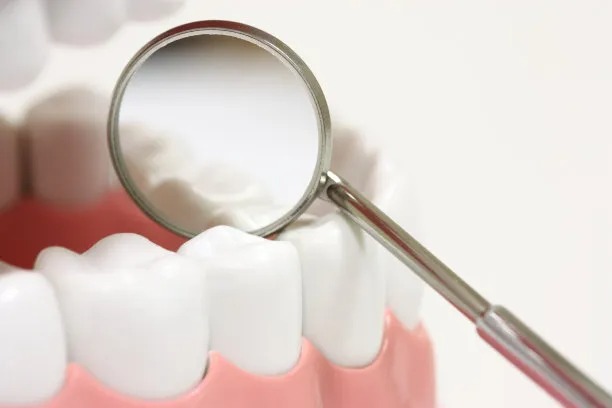The Essential Guide to Extracting a Tooth Safely and Painlessly for Optimal Dental Health
Summary: This article serves as a comprehensive guide to safely and painlessly extracting a tooth, essential for maintaining optimal dental health. It outlines key considerations such as preparation and planning, understanding pain management, the actual extraction process, and post-operative care. By following these recommendations, patients can ensure a smoother experience, minimize discomfort, and reduce the risk of complications. The insights provided here are valuable for both patients and practitioners who aim to enhance dental procedures and promote overall oral well-being.
1. Preparation and Planning for Tooth Extraction

Before undergoing a tooth extraction, thorough preparation is crucial to ensure a safe and effective procedure. First, scheduling a consultation with a dentist helps to assess the necessity of extraction and determine the best approach. During this appointment, the dentist will review the patients medical history, take necessary X-rays, and discuss any specific needs or concerns.
Next, it is essential to inform the dentist about any medications being taken or underlying health conditions that could affect the procedure. Blood thinners, for instance, may require special considerations. By providing complete transparency, patients significantly contribute to making the procedure as smooth as possible.
Finally, patients should make arrangements for the day of the extraction. This includes planning for transportation, especially if sedation will be used, and ensuring that someone can provide care at home post-extraction. Adequate preparation is the key to minimizing anxiety and ensuring a successful tooth extraction experience.
2. Understanding Pain Management for Extractions
Pain management is a critical component of any dental procedure, particularly tooth extractions. Patients must explore the various options available to them to ensure a comfortable experience. Typically, local anesthesia is used to numb the area around the extraction site, preventing pain during the procedure. Understanding how anesthesia works and communicating any allergies or concerns with the dentist is vital.
Additionally, some patients may opt for sedation dentistry, which helps alleviate anxiety and provides hours of comfort. Understanding the differences between sedation types鈥攐ral sedation, nitrous oxide, or IV sedation鈥攃an empower patients to make informed choices that align with their comfort levels and medical histories.
Post-operative pain management is equally important. Dentists may prescribe over-the-counter pain relievers or stronger medications, depending on the severity of the extraction. Following the dentist鈥檚 instructions regarding medication usage is essential for a smooth recovery, helping to retain comfort in the days following the procedure.
3. The Actual Tooth Extraction Procedure
The tooth extraction process may seem intimidating, but understanding the procedure can help alleviate fears. Typically, it commences with the application of anesthetic to numb the site. Once the area is effectively numbed, the dentist will proceed to remove the tooth using specialized tools like elevators and forceps. Knowledge of the step-by-step procedure enables patients to mentally prepare for what lies ahead.
During the extraction, patients may feel pressure, but pain should not be a concern thanks to the numbness provided by local anesthesia. It is important for patients to remain still and follow the dentist鈥檚 instructions throughout this phase to avoid complications. Engaging in calming techniques, such as deep breathing, can help manage any remaining anxiety.
Once the tooth is removed, the dentist will provide specific aftercare instructions, which are crucial for promoting healing and preventing infections. Listening carefully to these instructions post-procedure can make a significant difference in the recovery experience. Overall, understanding the extraction process demystifies it, paving the way for a more comfortable experience.
4. Post-Operative Care for Optimal Recovery
Post-operative care is vital for optimal recovery after a tooth extraction. Following the dentists instructions regarding oral hygiene is imperative to prevent complications such as dry socket or infection. Generally, patients are advised to avoid rinsing their mouth for the first 24 hours and to gently rinse with salt water afterwards.
Diet plays an important role as well. Soft foods are recommended for the first few days, as they minimize strain on the extraction site. Drinking plenty of fluids and avoiding straws, which can dislodge blood clots, is equally important for healing. Proper dietary choices support the body鈥檚 recovery process significantly.
Lastly, monitoring the extraction site for unusual symptoms such as excessive bleeding or swelling is essential. If complications arise, patients should not hesitate to contact their dentist immediately. A proactive approach to post-operative care ensures a smoother transition back to normal activities and minimizes the risk of discomfort.
In summary, tooth extractions, when approached with proper preparation, pain management, understanding the extraction process, and diligent post-operative care, can be a safe and painless experience. By adhering to these guidelines, patients are likely to achieve optimal dental health and a faster recovery. Empower yourself with knowledge and ensure your dental procedures are as seamless as possible.
This article is compiled by Vickong Dental and the content is for reference only.



